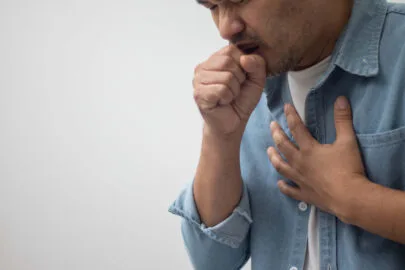
CPAP Causing a Sore Throat? Causes and Solutions
Using a CPAP machine for obstructive sleep apnea is crucial for improving your sleep and health, but it can sometimes lead to a sore throat. If you’re waking up with discomfort, you’re not alone. Understanding the reasons behind a CPAP sore throat and how to resolve it can help you maintain compliance with your therapy while staying comfortable.
Causes of a CPAP Sore Throat
Dry Air
One of the most common reasons for a sore throat when using a CPAP machine is the dry air the device delivers. CPAP therapy requires a steady stream of pressurized air, which can dry out the nasal passages, mouth, and throat, especially if the machine lacks a heated humidifier or if it isn’t set properly.
Mouth Breathing
If you breathe through your mouth during sleep, even while using a CPAP mask, the airflow can bypass the humidification system, leading to dryness and irritation in your throat.
Mask Leak
Leaks in your CPAP mask can cause air to escape, which not only reduces the effectiveness of your therapy but also contributes to dryness in your throat.
Improper Humidity Settings
Most CPAP machines include adjustable humidification settings. If the humidity level is too low, you may experience a sore throat due to insufficient moisture in the air.
Allergic Reactions or Contaminants
Dust, allergens, or mould in your CPAP tubing or mask can irritate your throat, especially if the equipment isn’t cleaned regularly.
Solutions to Relieve and Prevent a CPAP Sore Throat
Use a Heated Humidifier
Adding a heated humidifier to your CPAP machine can help alleviate dryness. Humidifiers introduce moisture to the air, preventing irritation in your throat and nasal passages. Many machines have built-in heated humidifiers or allow you to attach one.
Switch to a Full-Face Mask
If you’re prone to mouth breathing, consider using a full-face mask instead of a nasal mask. Full-face masks cover both your nose and mouth, ensuring that the pressurized air is delivered efficiently while minimizing dryness.
Adjust Humidity Settings
Experiment with your CPAP machine’s humidity levels to find a setting that provides adequate moisture without causing excessive condensation (rainout) in the tubing.
Use a Heated Hose
A heated hose can help maintain consistent moisture levels in the air, even in colder environments. This ensures that the humidified air stays warm and soothing as it travels through the tubing.
Practice Nasal Breathing
If you breathe through your mouth during sleep, consider using a chin strap. A chin strap can help keep your mouth closed, encouraging nasal breathing and reducing throat irritation.
Regularly Clean Your Equipment
Dust, allergens, and bacteria can build up in your CPAP mask and tubing if they’re not cleaned properly. Wash your mask, tubing, and water chamber at least once a week with mild soap and water. Replace filters and other components as recommended.
Hydrate Before Bed
Drinking water before going to bed can help keep your throat moist and reduce dryness caused by CPAP therapy. Avoid caffeine or alcohol, which can dehydrate you.
Seek Professional Advice
If you’ve tried these adjustments and still experience a sore throat, consult your doctor or sleep specialist. They can help identify underlying issues, such as allergies or an ill-fitting mask, and recommend alternative solutions.
Long-Term Benefits of Addressing a CPAP Sore Throat
Resolving the discomfort of a CPAP sore throat can have significant benefits beyond just alleviating irritation. When your therapy is comfortable, you’re more likely to use the machine consistently, improving your sleep quality and reducing the health risks associated with untreated sleep apnea, such as heart disease, high blood pressure, and daytime fatigue.
Don’t hesitate to consult a specialist if problems persist – they can help fine-tune your therapy to meet your specific needs.



